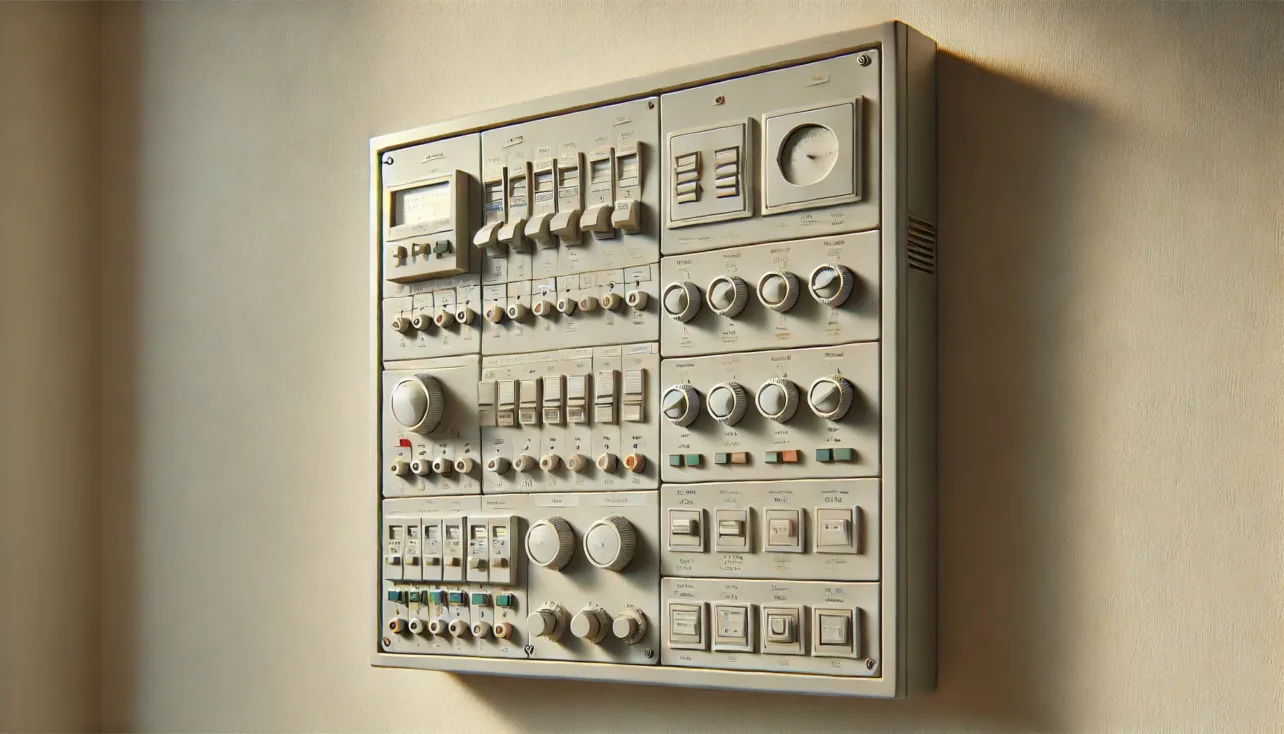Control panels are the central nervous systems of many industrial and commercial operations, orchestrating complex processes with precision and reliability. This guide delves into the world of control panels, offering insights into their types, components, applications, and future trends.
Introduction to Control Panels
A control panel is a centralized unit that houses various components for monitoring, controlling, and managing electrical and mechanical systems. These panels play a crucial role in automating processes, ensuring safety, and optimizing performance across diverse industries.
Types of Control Panels
Industrial Control Panels
- PLC Control Panels: Utilize Programmable Logic Controllers for flexible automation.
- Motor Control Panels: Manage the operation of electric motors in machinery.
- Process Control Panels: Regulate variables like temperature, pressure, and flow in manufacturing processes.
Electrical Control Panels
- Distribution Control Panels: Manage power distribution in buildings and facilities.
- Lighting Control Panels: Automate lighting systems for energy efficiency.
- HVAC Control Panels: Regulate heating, ventilation, and air conditioning systems.
Specialized Control Panels
- Machine Control Panels: Tailored for specific machinery or equipment.
- Enclosed Industrial Control Panels: Designed for harsh environments.
- Robotic Control Panels: Manage robotic systems in manufacturing and assembly lines.
Key Components of Control Panels
Input Devices
- Switches and Buttons: Allow manual input and control.
- Sensors: Gather data on temperature, pressure, position, etc.
Processing Units
- Programmable Logic Controllers (PLCs): The brains of many control systems.
- Microcontrollers: For simpler control applications.
Output Devices
- Indicators: LED lights, HMI displays for system status.
- Actuators: Control valves, motors, and other mechanical components.
Power and Protection Components
- Relays and Contactors: Switch larger electrical loads.
- Circuit Breakers and Fuses: Protect against overcurrent and short circuits.
Communication Devices
- Network Interfaces: Enable connectivity with other systems and remote monitoring.
Control Panel Design and Assembly
Design Considerations
- Operational Requirements: Define the panel’s functions and capabilities.
- Environmental Factors: Consider temperature, humidity, and potential contaminants.
- Safety Standards: Adhere to regulations like UL 508A for industrial control panels.
- Future Expansion: Allow for potential system upgrades.
Assembly Process
- Component Selection: Choose components based on specifications and compatibility.
- Layout Planning: Optimize space usage and ensure proper heat dissipation.
- Mounting: Secure components following best practices for vibration resistance.
- Wiring: Implement neat, organized wiring with proper labeling.
- Testing: Conduct thorough functional and safety tests before deployment.
Real-World Applications
Manufacturing
Case Study: Automotive Assembly Line
An automotive plant uses a network of control panels to manage robotic welding stations. The main control panel integrates inputs from position sensors, controls robotic arm movements via servo motors, and manages weld timing and intensity. This system increases precision and production speed while reducing human error.
Water Treatment
Example: Municipal Water Purification
A city’s water treatment facility employs control panels to automate the purification process. These panels monitor water quality sensors, control chemical dosing pumps, and manage filtration systems. The result is consistent water quality and efficient resource utilization.
Building Management
Application: Smart Office Complex
A modern office building uses integrated control panels for its building management system. These panels control HVAC based on occupancy and external weather conditions, manage lighting to optimize energy usage, and monitor security systems. The result is a comfortable, secure, and energy-efficient environment.
Future Trends in Control Panel Technology
Internet of Things (IoT) Integration
Control panels are increasingly connected to the internet, allowing for remote monitoring and control. This enables predictive maintenance and real-time optimization of processes.
Advanced Human-Machine Interfaces (HMI)
Touchscreen displays and intuitive graphical interfaces are replacing traditional button-and-dial setups, making control panels more user-friendly and informative.
Edge Computing
By processing data closer to the source, edge computing in control panels reduces latency and enhances real-time decision-making capabilities.
Artificial Intelligence and Machine Learning
AI-powered control panels can learn from historical data to optimize processes, predict equipment failures, and adapt to changing conditions autonomously.
Conclusion
Control panels are the unsung heroes of modern industry, silently orchestrating the complex symphony of machines and processes that power our world. As technology advances, these systems will become even more intelligent, efficient, and integral to operations across all sectors. For engineers, technicians, and industry professionals, a deep understanding of control panel technology is not just beneficial—it’s essential for staying at the forefront of industrial innovation.
By mastering the principles of control panel design, operation, and maintenance, you position yourself at the cutting edge of industrial automation and control. Whether you’re managing a manufacturing plant, optimizing a smart building, or developing the next generation of control systems, the knowledge of control panels will be your key to unlocking new levels of efficiency and innovation in your field.


No comments yet